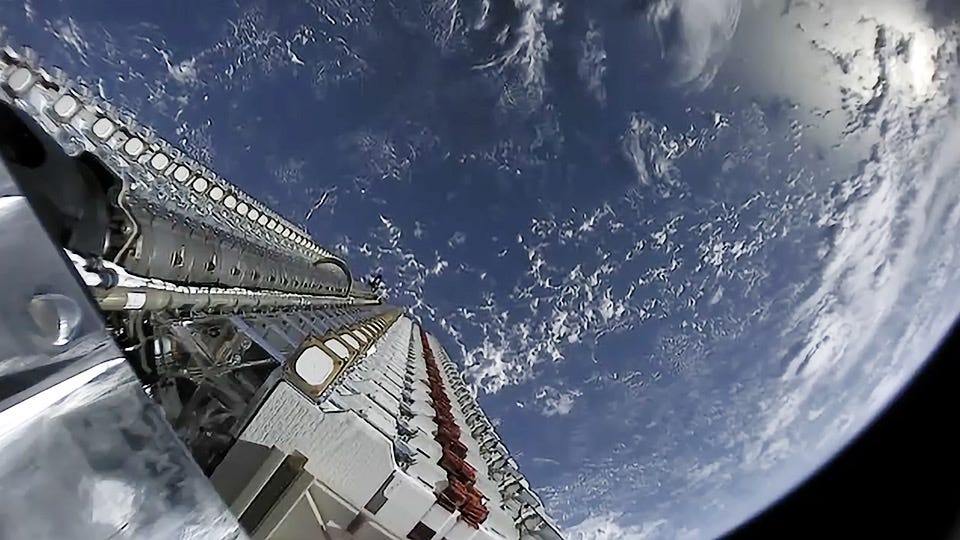Starlink represents the largest geopolitical shift in a century
Warfare - Part I
It’s almost universally agreed that drones represent the future of warfare in the 21st century.
However, both sides uses drones but only one side is able to conduct targeted deep strikes with drones.
Wherever Ukraine does deep strikes, it relies on Starlink.
It’s UAV’s that strike deep in Russian territory rely on Starlink to be piloted.
Its naval drones rely on Starlink to be piloted.
Starlink is the enabling technology
Russia has been copying everything Ukraine does, but it cannot actually copy this because Starlink is not available to the enemies of the United States.
Any drone technology built reliant on Starlink is only available to Western countries.
Starlink gives the United States a globally dominant military technology
No adversary of the United States will be able to compete.
It’s in fact not inconceivable adversaries of the US might strike starlink satellites but the network is built highly resilient and with the Starship, SpaceX would be able to orbit Starlink constellations faster than they could shoot them down.
Let’s take China.
China is already highly contained because all its maritime trade has to pass island chains, meaning it can be blockaded in a very efficient way.
That’s why China invested heavily in the Belt-and-road project to develop alternative routes to its main markets.
But China is very vulnerable to this technology:
Starlink-enabled naval drones can blockade China at zero risk to Allied military personnel
Ukrainian drones have a reach of 800km, large enough to be launched from any friendly island and capable of taking out major warships.
Starlink can’t be jammed
Actually it has been jammed, by drowning it in fake civilian GPS signals with a higher power output but it’s actually simple to counterjam it.
One just needs one reliable GPS signal (e.g. Authorized Galileo) and one can “rejam” it with phased array radio so that it receives even more higher powered “correct” GPS signals.
A technology I call “Rejamming” (and yes, this is an original idea of the author of this post and no, it hasn’t been tested).
But the signal itself is using beamforming which is a highly targeted beam that is impossible to jam.
Starlink is going to get dirt cheap
Right now, Starlink dishes are quite big but they already decreased the size with the Starlink Mini.
However, they are also working on Starlink Direct-to-cell technology and this would make the cost of Starlink connectivity less than 10 USD/chip.
In fact, it would be so cheap one could integrate them into FPV drones with little additional cost making them jam-resistant.
Right now, 90% of FPV drones are lost due to jamming
Starlink allows a drone pilot to be anywhere
Similar to US air force drones, the drone pilots could just clock into work in a midwest base in America while the drones are fighting at the other side of the globe.
This matters because experienced drone pilots are valuable and are actively being targeted at the Ukrainian front.
They will be out of reach soon.
This is important because humans are extremely adaptable and can adapt to any countermeasure of the enemy.
Give a pilot enough missions and he will figure out how to defeat defenses.
Pilots with experience are one of the main reasons that FPV drones are so lethal on the battlefield.
Starlink is fast enough
The ping of starlink is 25ms (back and forth) but a human’s reaction time is 250ms.
In essence the remote piloting of Starlink would only add 25ms to a human’s reaction time.
Even if Starlink is used to pilot a drone going at Mach 1, it would enable a pilot to make corrections up to 100 meters before impact.
China will have to develop its own Starlink network if it wants to have any chance at taking Taiwan this century.
Once you realize that
1/ Human pilots will always outperform other guided systems
2/ We already built systems that can deliver warheads anywhere on earth
3/ We can replace the warhead with a drone swarm that is remotely piloted.
Then you realize that Starlink is the most important technological advantage in the 21st Century and Ukraine and the West should triple-down on remote-piloted drones and its delivery system because no adversary will be able to develop them in the next decade.




